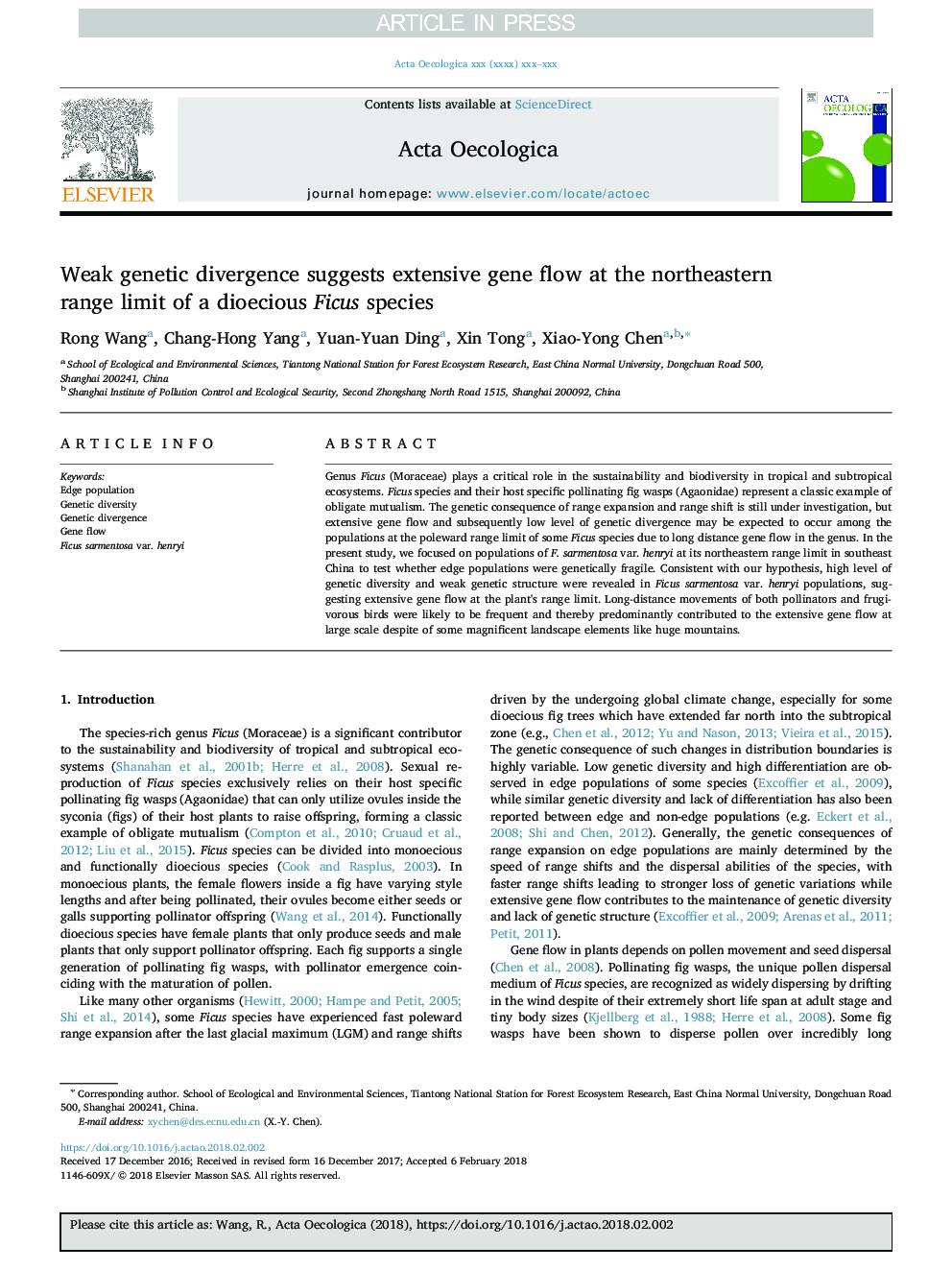| Article ID | Journal | Published Year | Pages | File Type |
|---|---|---|---|---|
| 8846472 | Acta Oecologica | 2018 | 6 Pages |
Abstract
Genus Ficus (Moraceae) plays a critical role in the sustainability and biodiversity in tropical and subtropical ecosystems. Ficus species and their host specific pollinating fig wasps (Agaonidae) represent a classic example of obligate mutualism. The genetic consequence of range expansion and range shift is still under investigation, but extensive gene flow and subsequently low level of genetic divergence may be expected to occur among the populations at the poleward range limit of some Ficus species due to long distance gene flow in the genus. In the present study, we focused on populations of F. sarmentosa var. henryi at its northeastern range limit in southeast China to test whether edge populations were genetically fragile. Consistent with our hypothesis, high level of genetic diversity and weak genetic structure were revealed in Ficus sarmentosa var. henryi populations, suggesting extensive gene flow at the plant's range limit. Long-distance movements of both pollinators and frugivorous birds were likely to be frequent and thereby predominantly contributed to the extensive gene flow at large scale despite of some magnificent landscape elements like huge mountains.
Related Topics
Life Sciences
Agricultural and Biological Sciences
Ecology, Evolution, Behavior and Systematics
Authors
Rong Wang, Chang-Hong Yang, Yuan-Yuan Ding, Xin Tong, Xiao-Yong Chen,
